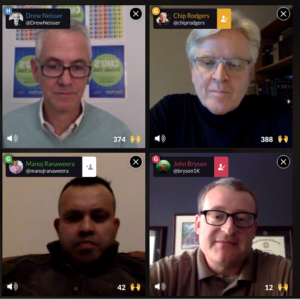If you had an advance copy of my book (hint, hint), you’d know already that Julie Garlikov is the master of making the most of “tiny budgets” having done so at Torani Foods and in her current role as VP of Marketing at Nuvesse Skin Therapies. What you wouldn’t know is that Julie nurtures her know how by maintaining a strong network of peers. In our interview below, Julie shares some of her secrets, insights that are just part of the reason The CMO Club recognized her with its President’s Circle Award.
This interview is followed by our recent Blab on budget busting, complete with a number of great recommendations on how to cut research costs way down and when/when not to work with outside partners. Consider this a Garlikov twofer, an efficient treat indeed!
Drew: How important is having a strong peer network to doing your job well? Can you provide a specific example of some action you took as a result of your network?
I’ve used my peer network as a valued resource and sounding board. Most frequently, I get tips on agencies, partners and even staffing my team. I also run programs and ideas by my peers to see what they think of a strategy. You really need someone else with a similar headset to push on your plans before you bring them forward.
Drew: Have there been any unexpected benefits to your networking efforts?
I’ve made some wonderful friendships along the way. Some of the people I initially just used as a business sounding board are now friends. We go to lunch frequently or catch-up on all things, both personal and professional.
Drew: Making time for networking is always a challenge. How much time do you invest in peer to peer exchanges and how do you rationalize this investment?
I spend a few hours a week at least on these efforts. I don’t need to rationalize the efforts anymore, as I know the value the fresh perspective gives me and my company. I’ve created bigger ideas, found new ways to solve my problems and just been pushed into new territories. And, the energy of connecting with a peer lifts me up and inspires me, giving me a new perspective.
Drew: Effective networks are ones in which there is a lot of give and take and some would say, start with giving and the taking will follow. What’s your approach? Do you keep a mental scorecard? How do you handle the takers?
I am always willing to help out others and don’t see the world as a scorecard or a big mental scale. Some of my network help me more than I help them and are more mentors. But then I mentor others that way. I see it a bit differently and think that if you’re helpful and give the time, you’ll always find others who will do the same for you.
